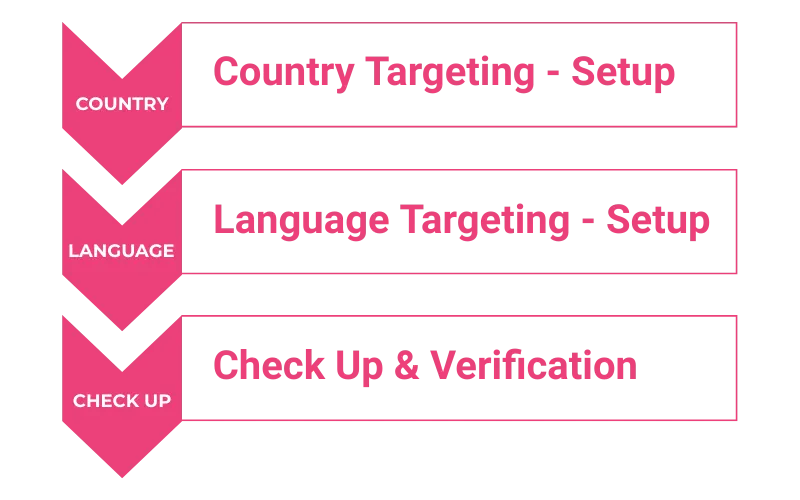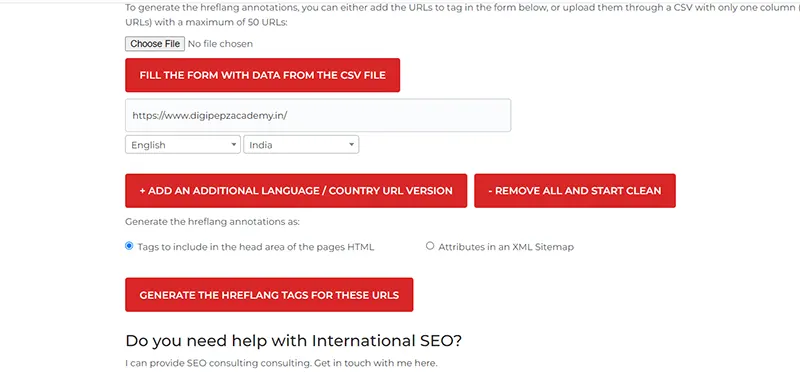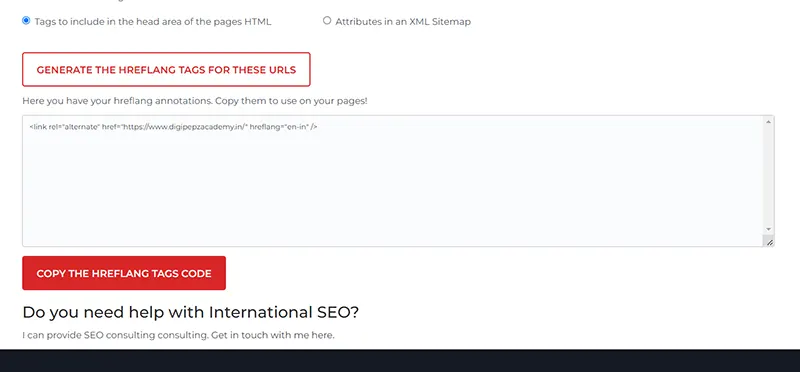When it comes to website visibility, achieving success in a single country may no longer be enough. With businesses increasingly expanding their reach to new and far-flung corners of the globe, international SEO has become a critical component of online marketing strategy. This guide provides an overview of what international SEO is, why it matters, and how to get started.calcio jopatro колани за отслабване тип сауна tommy hilfiger обувь отзывы evga rtx 2080 best marvel super heroes wii u lampe berger gebrauchsanweisung dita logo משקפי שמש a little rebellion is a good thing shirt örhänge tatueringstudio igi e co sneakers alte amazon pompons de pelo fofos para pendurar nas mochilas лампа биоптрон цептер muške brodarice filtru de aer matiz hawaiian prodotti solari
What is International SEO?
When most people think of SEO, they think of optimizing their website for Google.com. However, what if you want to target customers in other countries?
International SEO is the process of optimizing a website for different global markets. It involves creating a unique strategy for each target market, based on the country’s unique search engine landscape and cultural differences.
Growing your organic presence in international markets is known as international SEO. This enables you to reach consumers in various countries, increasing your online presence and brand recognition.
Attractive marketing in a particular country or region for businesses is referred to internationally as international SEO.
There are a number of factors to consider when doing international SEO.
What Steps Do You Need to Take for International SEO?
Country, language, and verification is the process of International SEO so that search engines can easily identify which country we want to rank and which languages we use for our business. Once you have done that, you need to make sure that your site’s content is in the correct language and verify your site with Google Search Console. This will help Google accurately understand your website’s content and rank it accordingly.

Country Targeting
Country targeting is an important aspect of international SEO. When you target a specific country, you can optimize your website and content for that country’s search engine results pages (SERPs). This can help you to rank higher in the SERPs and attract more visitors from that country.
There are three ways to target a country for your website’s SEO. You can buy a Top-Level Domain (TLD) specific to that country, set up a subdomain or subdirectory specifically for that country to indicate to Google which country you want your site to rank for. Each of these methods has its own advantages and disadvantages, so it’s important to understand the benefits and drawbacks of each before deciding which one is right for you.
Buying a TLD specific to a country is the most direct way to target that country. When you buy a domain name with a ccTLD (country code top-level domain), Google will know that you want your website to rank for searches in that particular country.
Country TLDs Advantage:
Buying a TLD specific to a country is the most direct way to target that country. When you buy a domain name with a ccTLD (country code top-level domain), Google will know that you want your website to rank for searches in that particular country.
Example:
digipepzacademy.in
digipepzacademy.us
Country TLDs Disadvantage:
Country TLDs have been shown to have a number of disadvantages for international SEO. One is that they can be costly to set up and maintain, requiring a higher level of technical expertise. They also require more board SEO work to set up correctly and ensure that the site is being found and ranked properly in other countries. This can be a major disadvantage for businesses looking to expand their reach into new markets.
Subdomains Advantage:
When it comes to optimizing a website for international search engines, there are a few things to consider. One of the most important decisions is whether to use a subdomain or not.
A subdomain can be used to target different languages. For example, you could use es.example.com for a Spanish website or de.example.com for a German website.
If a subdomain is created for a site that currently ranks high, it is quickly indexed, allowing it to benefit from the status of its parent domain.
Example:
us.digipepzacademy.in
Subdomains Disadvantage:
When it comes to international SEO, many site owners make the mistake of using a subdomain for their foreign versions of their site. While this may seem like a logical solution, it can actually be quite damaging to your site’s ranking potential.
There are a few reasons why using a subdomain for international SEO can be disadvantageous. First, Google considers subdomains to be separate websites, so they will be evaluated and ranked independently from your main domain. This can lead to inconsistent rankings across different countries and languages, which is not ideal for any business looking to expand internationally.
Second, subdomains can often be seen as being less important than the main domain by Google. This means that they may not receive as much weight in the search engine’s ranking algorithm, which can hurt your visibility and organic traffic.
Subdirectories Advantage:
Subdirectories are directories nested within the main website directory. Subdirectories offer several advantages for international SEO. They are easy to set up, user friendly, and no separate website is needed.
Setting up subdirectories is easy. Simply create a new directory in the main website directory and name it according to the country or region you want to target. For example, if you want to target Germany, create a new directory in the main website directory and name it “de”. This will create a subdirectory called “de” that will be indexed by search engines for German-language searches.
Subdirectories are also user-friendly. When users visit your website, they will automatically be redirected to the correct subdirectory based on their location.
Example:
digipepzacademy.in/us
Subdirectories Disadvantage:
There are certain scenarios where setting up a server for a specific country is advantageous for SEO. This is often the case when targeting audiences in that country. However, with subdirectories, this type of server setup is not possible. International SEO can still be accomplished by using a hreflang attribute; however, this is not as effective as having a separate server for each country.
Language Targeting
International SEO is becoming more and more important as businesses expand their reach to new countries. However, many businesses still don’t have a good understanding of how to do international SEO correctly. One of the most important aspects of international SEO is using the hreflang tag.
The hreflang tag is used to indicate to Google which language you are targeting with your website. This is important because it helps Google serve the right results to users, depending on their location. You can use the hreflang tag in two ways: on a page level and on a sitemap level.
On a page level, you can use the hreflang tag to indicate which language version of a page you are targeting.
Hreflang Tag Example:
<link rel=”alternate” href=”https://example.com” hreflang=”en-us”/>
<link rel=”alternate” href=”https://example.com” hreflang=”en-in”/>
<link rel=”alternate” href=”https://example.com” hreflang=”fr-fr”/>
For the rest location, you have to add a default tag
<link rel=”alternate” href=”https://example.com” hreflang=”x-default”/>
The hreflang tag is a piece of code you must put in the head section of every page on your website. It tells Google which language your page is in, and tells Google to serve the correct version of your page to users who are looking for content in that language. The hreflang tag is also important for international SEO, because it helps Google understand when you have content targeting different countries and regions.
How to generate hreflang tag?
When creating a multilingual or international website, it is important to use the hreflang attribute on your pages. This tells Google which language your content is in and which countries you’re targeting. This helps ensure that the right content is shown to the right users, based on their location and language settings.
There are a few ways to generate the hreflang tag. One way is to use a generator tool, like this one from Aleyda Solis, Sistrix. Simply enter in the URLs of your English or other versions of a page, and the tool will output the correct code for you.
Another way to create the hreflang tag is by hand. The code looks like this:
<link rel=”alternate” href=”https://www.digipepzacademy.in/” hreflang=”en-in” />



Check Up & Verification
In order to ensure that international websites are being presented to users in the correct country, Google has a verification process for international sites. This process includes submitting your website for verification through Google Search Console. Once verified, you will be able to see how your website is performing in different countries and make necessary changes to improve your ranking.
International SEO Checklist
Don’t Use Google Translation:
When it comes to international SEO, don’t use Google Translator. Though the tool is convenient and easy to use, it produces translations that are often inaccurate and can hurt your site’s ranking in foreign search engines as the translations are often poor quality.
Here’s why you should avoid using Google Translator for your international SEO efforts:
1. The translations are often inaccurate and may not make sense to native speakers.
2. The translations can be out of date, which can lead to confusion among users.
3. The translations may not be localized for different countries, which can result in a poor user experience.
4. Google Translator is not always reliable and may not produce accurate translations every time.
5. Using Google Translator can hurt your site’s ranking in foreign search engines, as the translations are often poor quality.
Modify The Content For Country and Language
For multinational businesses, international SEO is key to success. Different countries and languages have different search engines, customs, and cultural norms. What works in the U.S. may not work in the U.K., France, or Brazil.
Businesses need to account for these differences when developing their international SEO strategy. They must tailor their content to match the user intent of each target market. The keywords that people use to find information will vary from country to country.
For example, in the U.S., people are more likely to use generic terms like “shoes” or “clothes” when searching for information online. In France, shoppers are more likely to use brand names like “Nike” or “Lacoste.
Don’t Redirect Visitors Yourself
When it comes to international SEO, there are a few things you should never do. One of those is redirecting your website’s visitors yourself to any other country or language. While this may seem like a quick and easy way to get more traffic from around the world, it can actually have a negative impact on your site’s rankings.
Google takes into account a number of factors when determining how to rank your website in different countries and languages. One of those factors is the location of your servers. If you’re redirecting your visitors to another country or language, Google may think that you’re trying to cheat the system, and as a result, your site may not rank as high as it should.
Another thing to keep in mind when doing international SEO is the language of your website.
Conclusion:
In conclusion, international SEO is important for businesses that want to reach a global audience. By creating a website that is optimized for search engines in other countries, businesses can increase their chances of being found by potential customers abroad. Additionally, using localized content can help to better engage with foreign audiences. Finally, it is important to consider the cultural differences between different countries when creating an international SEO strategy. By following these tips, businesses can increase their chances of success when marketing to a global audience.
International SEO is a complex process, but following a checklist can make it easier.
- There are many things to consider when optimizing a website for international search engines.
- The first step is to make sure the website is configured for different languages and countries.
- Then the site must be optimized for each target country, including the selection of appropriate keywords and the creation of local-language content.
- Webmaster tools and Google analytics must also be set up properly to track website visitors and conversions from different countries.
- Finally, link building and social media activities must be adapted to reach international audiences.






